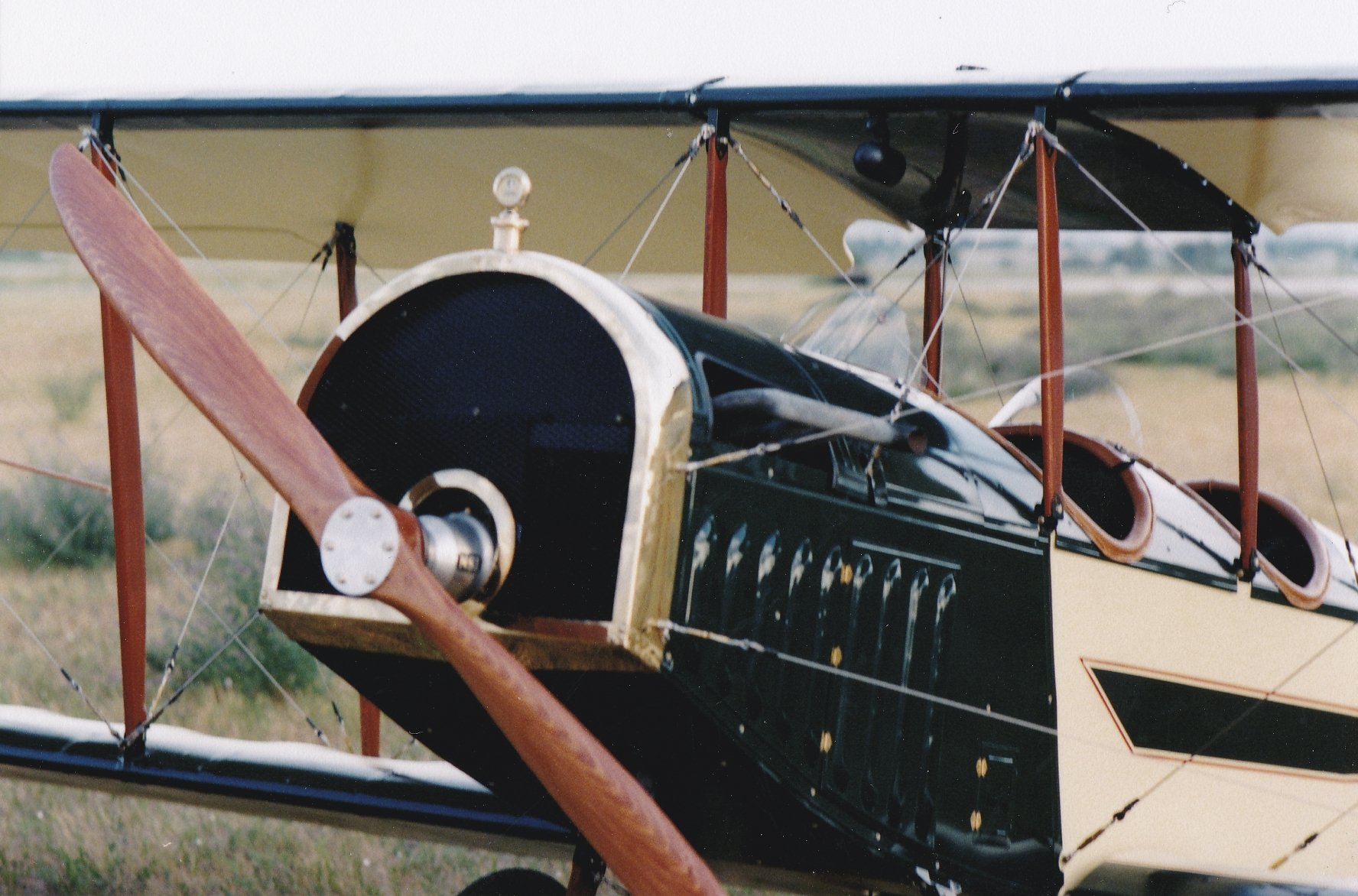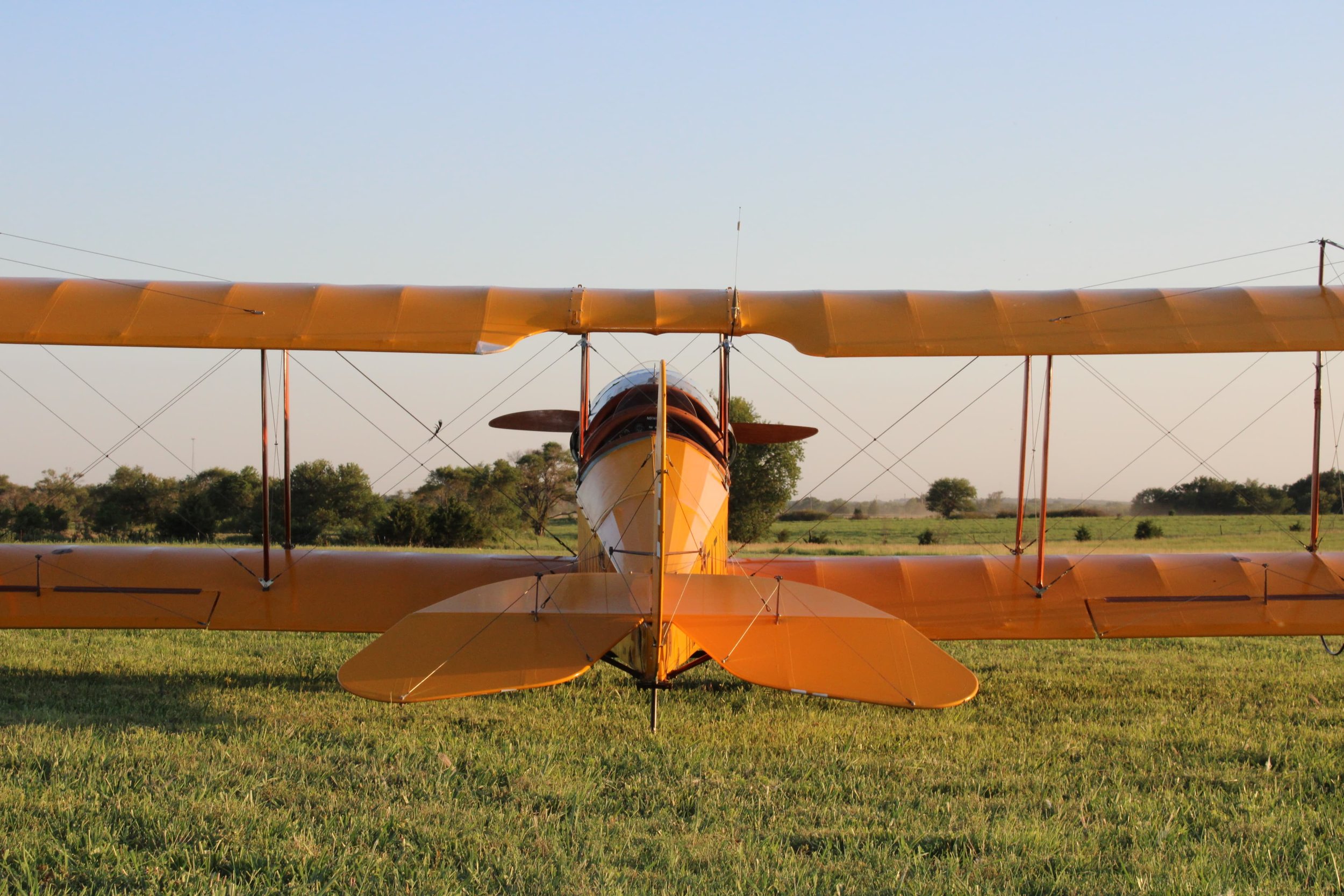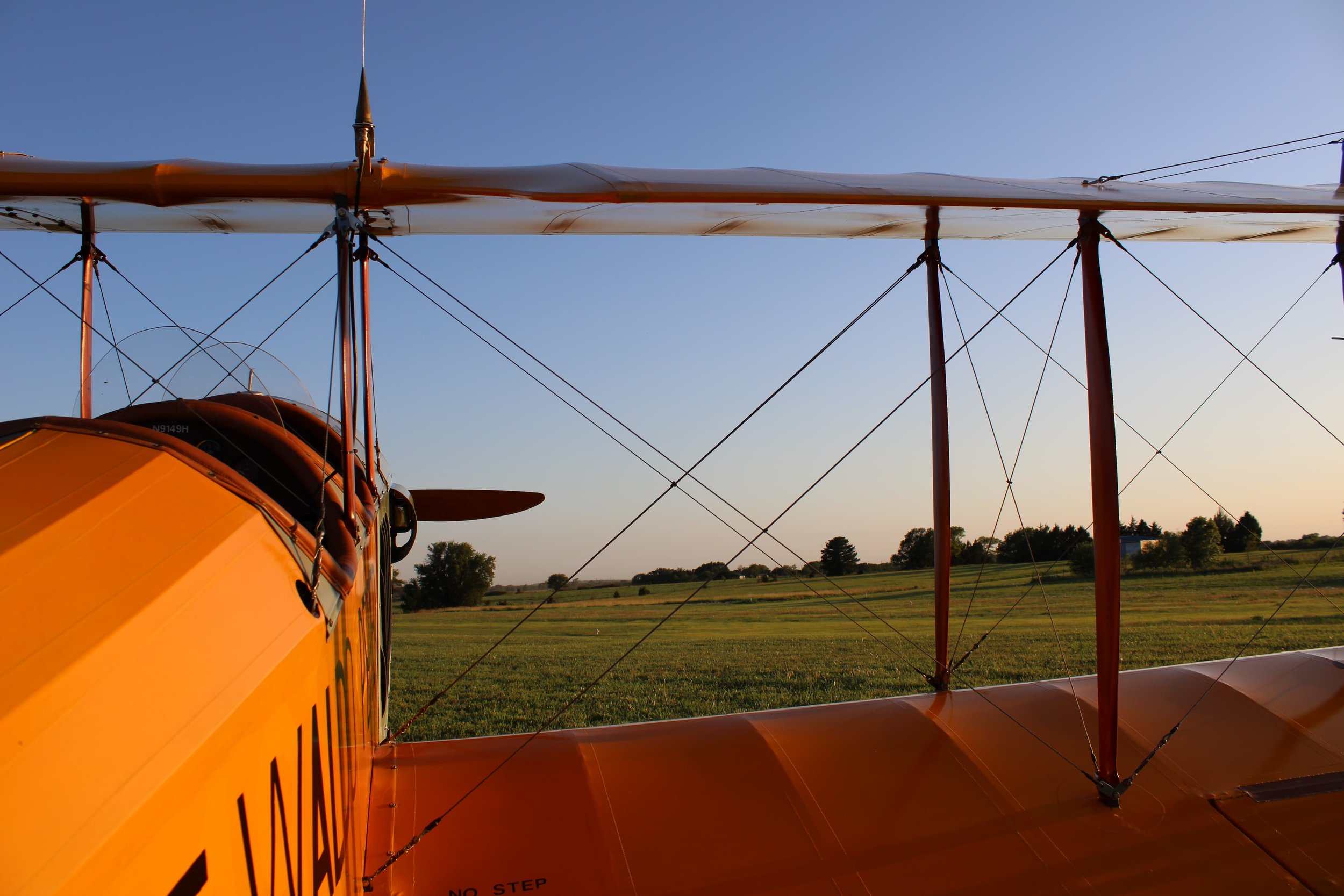Early Bird Jenny Kit
They build tin cans while you craft art
Skill level required: Beginner
Minimum space required: Large single car garage
Estimated build hours: 500
Sport Pilot Eligible
© Youngblut 2000
In the early days of aviation’s golden age, the Curtiss JN-4 "Jenny" became America’s most iconic aircraft and the first airplane many people ever saw. With the Great War at an end, military surplus Jennies and their daring aviators became the very definition of adventure.
Wing walkers, barnstormers, and air mail pioneers reigned supreme as general aviation began to flourish.
It’s time to take your aerial adventures to the next level. Master the sky with your very own piece of antique nostalgia: the popular Early Bird Jenny, now manufactured in a larger size by Timber Tiger Aircraft.
© Duncan 2023
© Youngblut 2024

EB Jenny (Gen 2)
QUICK SPECS
Basic Kits starting at incredible prices (see Order Form for pricing)
Options available to make a custom Deluxe Kit (Basic Kit plus all other welding finished, stamped ribs, CNC routed wood struts, tail surfaces, pre-formed windscreens, all airframe materials, all hardware)
75% scale (the Timber Tiger Aircraft fuselage is larger than the 1st Gen EB Jenny)
Span: 30'
Length: 20', 6"
Empty weight: 600-750 lbs
Gross weight 1200-1260 lbs
Cruising speed: 70 mph
Stall speed: 35 mph
Climb rates up to 1000 ft/min
Dual controls
70 to 100 horsepower
Optional front side door
Incredibly low build time estimated at 500 hours
Revised lines for our 2nd generation Jenny (Gen 2) add to authenticity
Contours pulled directly from original Curtiss drawings
Proportioned for today’s aviators
Larger fuselage vs the original Early Bird Jenny
Each kit comes with full documentation and factory support. Plans are provided on 22” x 34” sheets.

Dummy Curtiss OX-5 in the works

© Duncan 2023

FLIGHT REPORT
The following is taken from the original Early Bird Aircraft marketing material. Please note that this flight report is for an airplane weighing about 420 lbs empty and using 46 hp. Later Gen 1 Jennies ended up having much improved performance with engines in the 80 hp neighborhood and empty weights in the order of 680 lbs, though the takeoff rollout increased a bit from the originally-advertised 200 feet. Specifically, this would be the phenomenal Youngblut Jenny, the green and cream Jenny pictured in our advertising.
Early Bird Jenny Flight Report, Dennis Wiley
“Due To her large wing area, you also have a very good angle of climb for those short fields with 50-foot obstacles all around.”
“Slow flying where nothing happens very fast is one of the great joys of flying your Jenny! Like the great old biplanes of the past, you have a bit more time to react compared to the hot, short-coupled designs of today. Her three-axis flight controls are pretty well described as “Cub-Like” with a fair amount of rudder available and about a three-and-a-half to four seconds 45 degree-to-45 degree roll rate. I’ve flown her for as long as 45 minutes without touching the stick (something you couldn’t do in an original Jenny). Although her flight speeds are similar to the original, she has a better climb performance due to a better power-to-weight ratio. A good climb out and approach speed is in the 45 to 50 mph area with about 70 mph straight and level full throttle and 60-65 mph at cruise (a 65 hp engine will do a bit better, of course). She just loves little grass fields and, as mentioned before, she is quite capable of short takeoffs and landings. With a roller blade wheel attached to the tail skid, you can happily land and taxi on modern, larger hard surface airports but be ready to deal with a lot of attention and interest in your unique little Jenny—boy does she bring out the smiles on people’s faces!”
FAQs
What is the Early Bird Jenny construction process?
In a word, enjoyable! That enjoyment is the reason so many have flown all around the world.
Simple aluminum tube spars, pre-stamped ribs, pre-routed wood struts, and more are all available to make your build experience fit your lifestyle, whether you prefer a more plans-built route (Basic Kit) or a more Deluxe Kit route (just add the options as you see fit).
The fuselage comes pre-welded in even the Basic Kit, meaning you have a massive jump start on your project. If you aren’t much of a welder, Timber Tiger Aircraft can finish all other welding for you, too.
What engine will you use?
Preferably one with a recommended 70-100 hp. However, if built light enough, 65 hp will do the job. You just want an engine that spins a large-diameter, efficient propeller. Many engines have been used in the past: Geo Metro/Suzuki, Honda, Rotax 582 (real performer), UL Power, and HKS. If you want a “real” airplane engine, opt for the Rotax 912 UL 80 hp or Rotax 912 ULS 100 hp. Heavier engines such as a Continental C-85 or C-90 will work, but let us know before-hand so we can move the wings forward a bit if needed.
Should you buy a gen 1 or gen 2 jenny?
Let’s say you have a line on a used Gen 1 Jenny for sale. Should you buy it or a Gen 2 kit? Only you can answer that question. However, keep in mind the Gen 1 Jennies were all plans-built and quality varied from plane to plane. In addition, design philosophies were different back in 1985, as the Gen 1s were very much ultralight-ish in design. Timber Tiger Aircraft fine-tuned the design in many small but important ways that will not only make you confident in your money being well-spent, but also confident that the build quality is fantastic. After all, Timber Tiger Aircraft isn’t known for cutting corners. And Timber Tiger’s gross weight increase over the Gen 1 means you can now take larger passengers (just make sure you have at least 70 hp).
© Duncan 2023
Speaking of CG, will you fit?
Most likely. The largest pilots of Gen 1 Jennies were known to be about 250 lbs and some were 6’, 4” tall. With Timber Tiger Aircraft’s Gen 2 Jenny, things are easier still, as the cockpit is 25-3/4” wide and the fuselage is 12% larger than Gen 1 Jennies. If you’re heavier, let us know and we can give guidance on how to accommodate you. If you’re wide, let us know and we can build a wide-body fuselage for you. The sky is the limit thanks to the simple steel tube fuselage.
© Youngblut 2000
how does the jenny fly?
That’s a question best left to the 100-or-so people who have put a first flight on their Jenny. Most say it’s among the most fun they’ve ever had in an airplane. Like any airplane, too little power will make it more of a handful than it needs to be. But use the recommended power and you’ll have an enjoyable, Cub-like airplane that’ll turn heads anywhere you go. As a fun side note, the prototype Gen 1 Jenny has been known to haul two people over the Continental Divide. Pretty impressive!
© Youngblut 2000
Are you less of a military person and more of a barnstormer? We have barnstormer-esque options, such as a front side door and simple wing tip struts that replace the original-style wire/king post combo.
Of course, if you are more military than barnstormer, you can still customize your plane. That was a common occurrence in 1917-1919.
© Youngblut 2000
Timber Tiger Aircraft is aware there are Russian bootleg Gen 1 plans out there. This is the same source that rips off many other major companies. DO NOT buy anything from them. Not only will you be lucky to get what you paid for, but the plans they sell are garbage (illegal) copies and they don’t come with a manual or factory support. In addition, Gen 2 Jennies are superior and effectively render those bootleg plans beyond useless.
Timber Tiger Aircraft will not support any airplanes built without a serial number from Early Bird Aircraft (Gen 1) or Timber Tiger Aircraft (Gen 2). Be sure you have that serial number.
As Early Bird Jenny designer Dennis Wiley would say, happy cloud bumping!
Downloads
-

Pricing: Early Bird Jenny (Gen 2)
-

Sample manual: early bird jenny introduction












